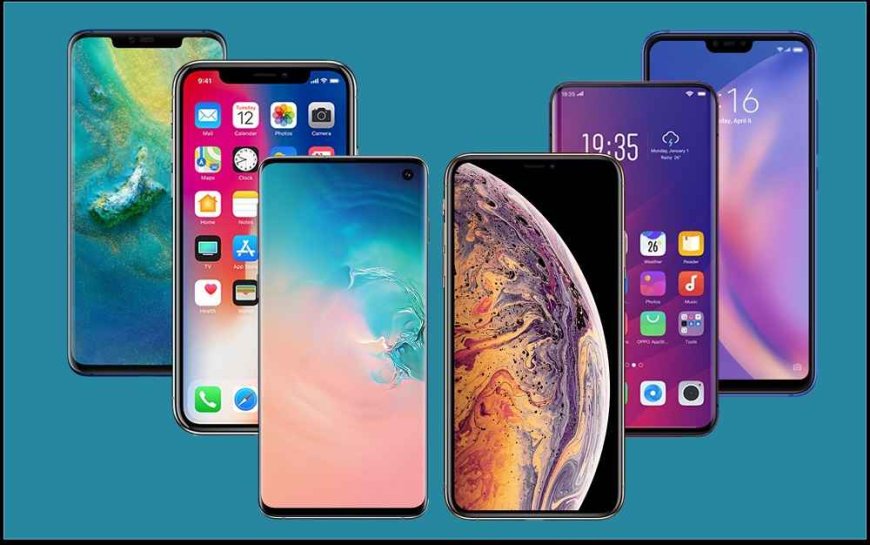Unveiling the Countries with the Most Expensive Phones
As smartphones have become an integral part of modern life, their prices have become a crucial factor for consumers worldwide.

As smartphones have become an integral part of modern life, their prices have become a crucial factor for consumers worldwide. The cost of smartphones can vary significantly from country to country due to a combination of factors, including import taxes, currency fluctuations, local economic conditions, and brand positioning. In this article, we will explore the countries where phones are most expensive, shedding light on the reasons behind these price disparities.
Norway
Norway, a prosperous Scandinavian nation known for its high standard of living, is renowned for having some of the most expensive smartphones in the world. The exorbitant prices can be attributed to Norway's high import duties and taxes, which drive up the cost of mobile devices. Additionally, the strong Norwegian Krone against other currencies impacts the final retail prices. However, despite the high prices, Norway's affluent population still embraces the latest smartphones, emphasizing the importance of technology in the country.
Brazil
Brazil, the largest country in South America, is another nation where smartphones come with hefty price tags. The Brazilian government imposes high import taxes on electronic goods, including smartphones, making them significantly more expensive for consumers. Additionally, logistical challenges and distribution costs across the vast country contribute to the overall pricing. Despite these obstacles, the Brazilian market remains a significant player in the global smartphone industry, with a strong demand for high-quality devices.
Denmark
Denmark, a small Nordic country, is known for its high taxes and robust social welfare system. As a result, the cost of smartphones in Denmark is relatively high due to the value-added tax (VAT) and customs duties. Additionally, the country's small market size and limited competition in the mobile phone industry may also contribute to the higher prices. Despite these factors, Denmark boasts a tech-savvy population that continues to invest in the latest smartphone technology.
Argentina
Argentina, a large South American nation, faces economic challenges, including inflation and currency devaluation. These factors contribute to the high cost of smartphones, as they lead to fluctuating exchange rates and price instability. The Argentine government also imposes significant import duties on electronic devices, further driving up prices for consumers. Despite the economic hurdles, smartphones remain in demand in Argentina, with consumers looking for affordable options without compromising on quality.
Switzerland
Switzerland, known for its high living standards and strong economy, is home to some of the most expensive smartphones globally. The Swiss Franc's strength against other currencies and high import taxes contribute to the elevated prices. Moreover, Switzerland's premium positioning as a luxury market may also influence smartphone prices, with high-end brands commanding a premium in the market. Despite the high costs, Switzerland's tech-savvy population appreciates cutting-edge technology and often invests in top-of-the-line smartphones.
Pakistan
Pakistan, a populous country in South Asia, is also known for relatively higher smartphone prices. The cost of smartphones in Pakistan can be attributed to various factors, including import taxes, currency fluctuations, and distribution costs. Import duties and taxes levied by the government add to the final retail price of smartphones, making them more expensive for consumers. Additionally, currency fluctuations can impact the cost of importing mobile phones into Pakistan, leading to price fluctuations in the local market. Distribution costs and logistics challenges in the country also contribute to the overall pricing.
Despite the relatively higher smartphone prices, Pakistan remains a rapidly growing market for mobile devices. The country has a large youth population that is highly tech-savvy and eager to adopt the latest smartphone technology. As a result, manufacturers continue to offer a wide range of devices in Pakistan, catering to different segments of the population with varying budgets and preferences.
India
India, with its massive population and rapidly growing smartphone market, may seem like an outlier in this list. While many affordable smartphones are available in India, the market also sees a growing demand for premium devices, especially from popular brands like Apple and Samsung. The prices of high-end smartphones in India can be significantly higher due to import duties, taxes, and logistics costs, making them relatively more expensive compared to other countries. Nevertheless, the Indian market remains highly competitive, with manufacturers offering a range of devices to cater to different segments of the population.
The price of smartphones can vary significantly from country to country, influenced by a multitude of factors, including import taxes, currency fluctuations, local economic conditions, and brand positioning. Countries like Norway, Brazil, Denmark, Argentina, and Switzerland stand out as places where smartphones are relatively more expensive. Import duties, taxes, and strong local currencies contribute to elevated prices in these countries.
Understanding the factors affecting smartphone prices is essential for consumers and manufacturers alike. While some countries experience higher smartphone costs due to specific economic or regulatory factors, the global smartphone market remains dynamic, with manufacturers striving to offer a balance between affordability and high-quality devices. As technology continues to evolve, the smartphone landscape is likely to witness further changes, making it essential for consumers to stay informed and make informed choices based on their needs and budgets.
